11 Types of Black Birds in Connecticut (With Pictures)
Last Updated on
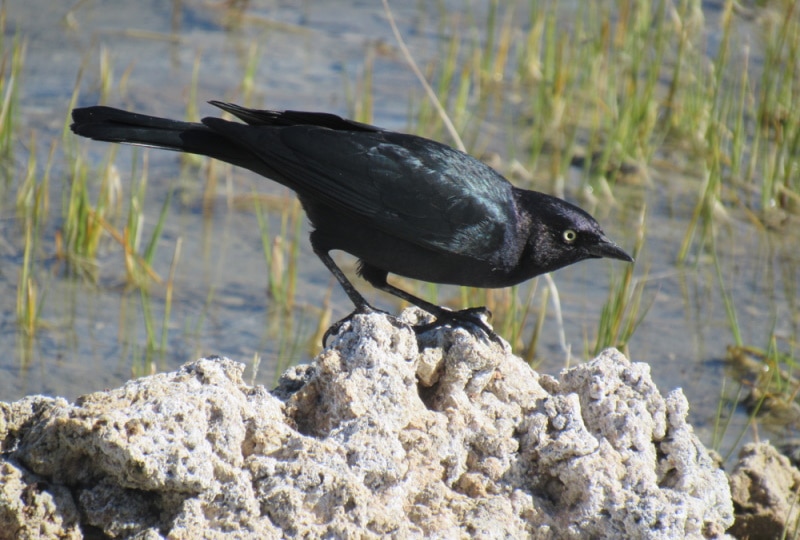
Whether you’re interested in getting into bird watching or are just trying to identify a bird that you’ve already seen, this guide will walk you through all the different black bird species in Connecticut.
You’ll get information on how to identify each one and even the time of year that you can expect to see them in the Constitution State!

Top 11 Types of Black Birds in Connecticut:
1. European Starling

| Scientific Name | Sternus vulgaris |
| Population | 200 million |
| Weight | 2.5 to 3.5 ounces |
| Wingspan | 12 to 17 inches |
| Time in Connecticut | Year-round |
The European starling is an invasive species in Connecticut and in the rest of the states. You can find these birds year-round throughout the continental United States, and as they have few natural predators, it’s unlikely that their population numbers will dip anytime soon.
Moreover, these birds typically stick together and swarm. Between that and their tendency to drive away local birds, the European starling is viewed as a pest by most birdwatchers.
2. Red-Winged Blackbird
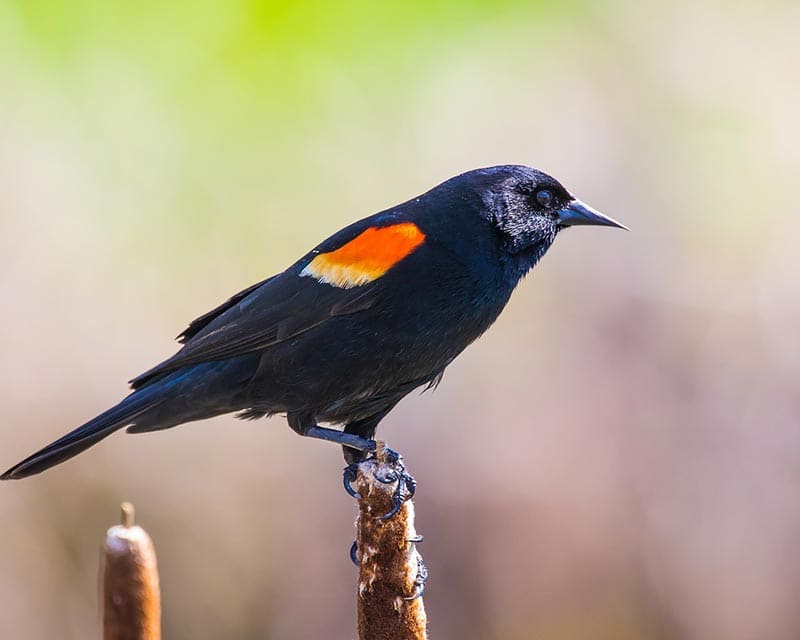
| Scientific Name | Agelaius phoeniceus |
| Population | 210 million |
| Weight | 1.1 to 2.7 ounces |
| Wingspan | 12.2 to 15.8 inches |
| Time in Connecticut | Year-round |
If you take out the European starling, the most populous black bird in Connecticut is the red-winged blackbird. Their population numbers exceed 210 million, and you can find them year-round in Connecticut.
Despite their name, the red-winged blackbird doesn’t actually have red wings, just red shoulders. The rest of the wing matches their body, which is a stark black coloring.
3. Common Grackle
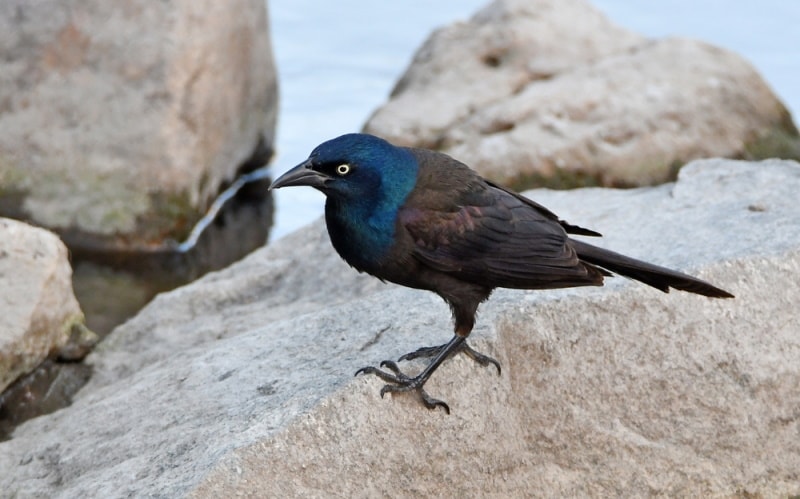
| Scientific Name | Quiscalus quiscula |
| Population | 67 million |
| Weight | 2.6 to 5 ounces |
| Wingspan | 14.2 to 18.1 inches |
| Time in Connecticut | Year-round |
While female common grackles have a stark all-black appearance, you might not consider the males as “black birds.” They do have black on their bodies, but it pairs with blue and purple, and their head is a stark blue too.
You can find grackles year-round in Connecticut. During the warmer months, they’ll fly even farther north into parts of Canada for the breeding season.
4. Brown-Headed Cowbird
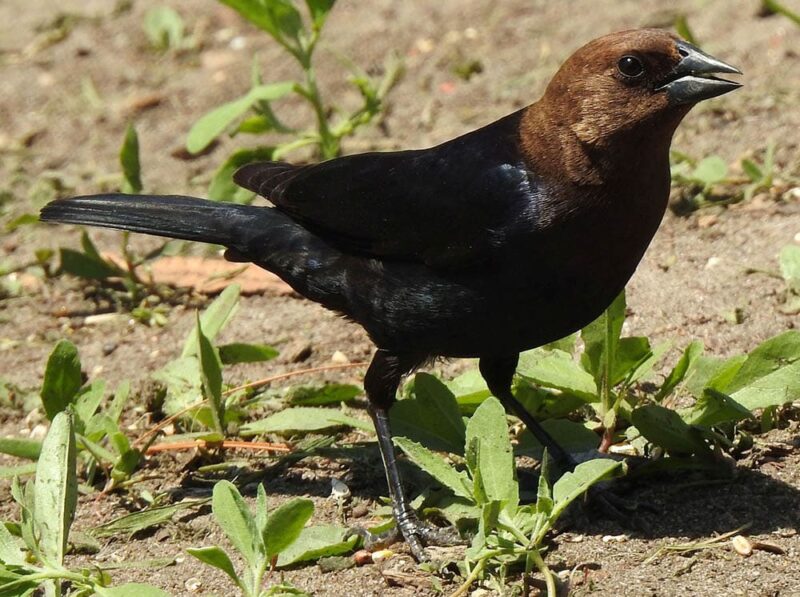
| Scientific Name | Molothrus ater |
| Population | 56 million |
| Weight | 1.5 to 1.8 ounces |
| Wingspan | 14.2 inches |
| Time in Connecticut | Year-round |
While not every brown-headed cowbird has a black appearance, some males do have black feathering. For the most part, though, these birds look more brown or blue than black. Another interesting fact about the brown-headed cowbird is that they don’t have their own nests.
Instead, the females look for the nests of other birds and quickly drop their eggs there when the other bird isn’t looking. The other bird will raise the chicks as their own.
5. Baltimore Oriole

| Scientific Name | Icterus galbula |
| Population | 6 million |
| Weight | 1.1 to 1.4 ounces |
| Wingspan | 9.1 to 11.8 inches |
| Time in Connecticut | Breeding season |
The Baltimore oriole isn’t exactly what most people think of when they think of a black bird, but there’s no denying that they have black coloring, which contrasts sharply with their orange feathers.
You can only find the Baltimore oriole in Connecticut during the breeding season, and you’ll need to put out nectar if you want to attract them to your yard.
6. Rusty Blackbird
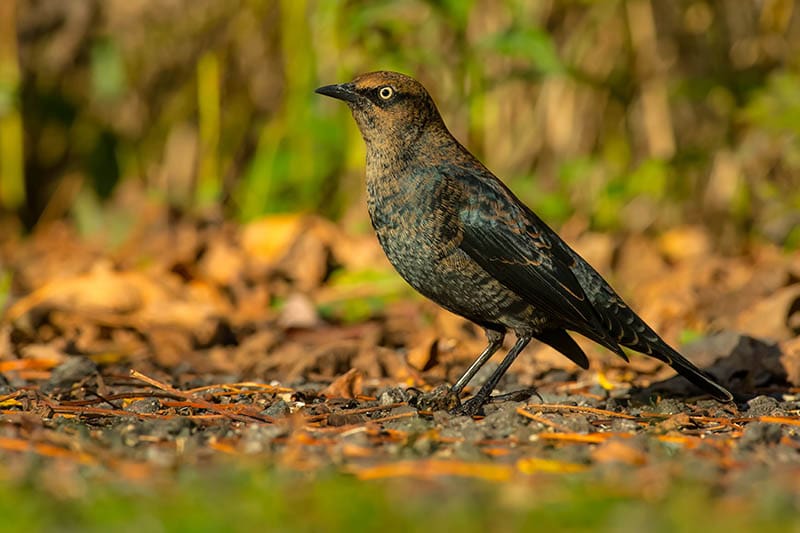
| Scientific Name | Euphagus carolinus |
| Population | 5 million |
| Weight | 1.7 to 2.8 ounces |
| Wingspan | 14.6 inches |
| Time in Connecticut | Nonbreeding season |
The rusty blackbird is a bird where only one of the sexes has a black appearance, the male. Males are all black from beak to tail, while females have much brown throughout their bodies.
The rusty blackbird gets their name from adolescent or non-breeding males. They have a bit of black in their coloring, but there are patches of brown, giving them a “rusty” appearance.
7. Bobolink

| Scientific Name | Dolichonyx oryzivorus |
| Population | 11 million |
| Weight | 1 to 2 ounces |
| Wingspan | 10.6 inches |
| Time in Connecticut | Migration and breeding |
If you spot a male bobolink, you’re in for a real treat. They have plenty of black throughout their body and wings, and the flecks of white contrast nicely with the darker color. They also have a patch on the back of their head where there’s no black at all, which adds to the overall beautiful appearance of the bird. Females have a yellower appearance, with some brown throughout their bodies.
8. Orchard Oriole
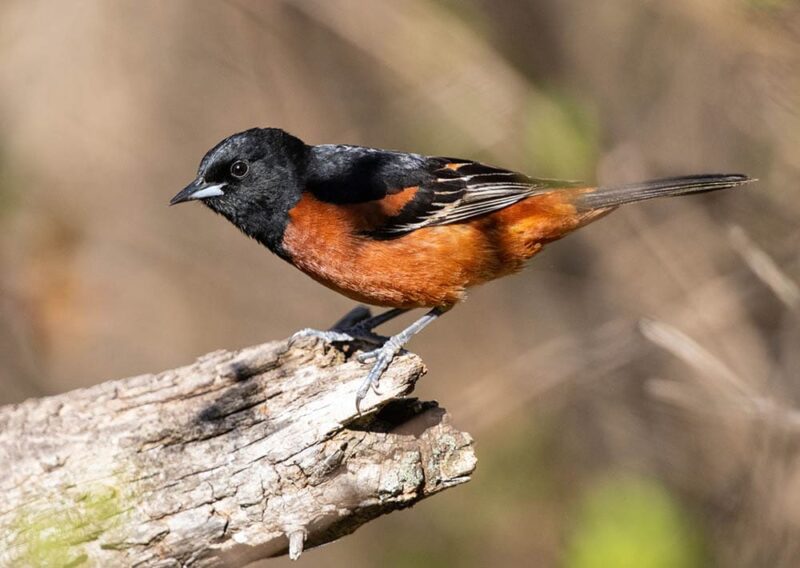
| Scientific Name | Icterus spurius |
| Population | 12 million |
| Weight | 0.6 to 1 ounce |
| Wingspan | 9.8 inches |
| Time in Connecticut | Breeding season |
The orchard oriole is an oriole bird that you can find in Connecticut during the warmer breeding season. They have a similar diet to the Baltimore oriole, so if you’re trying to attract an orchard oriole to your yard, putting out a nectar feeder is a great start.
They have a bit more orange in their body than the Baltimore oriole, but they have plenty of black along their heads and wings.
9. Eastern Meadowlark

| Scientific Name | Sturnella magna |
| Population | 37 million |
| Weight | 3.2 to 5.3 ounces |
| Wingspan | 13.8 to 15.8 ounces |
| Time in Connecticut | Year-round |
Of all the birds on this list, the eastern meadowlark is the bird with the least amount of black in its appearance. There are black feathers, but there are more yellow and white ones, and the bright yellow feathers really stand out.
You can find the eastern meadowlark in Connecticut year-round. Also, while many people confuse the eastern and western meadowlarks due to their similar appearance, you can’t find the western meadowlark in Connecticut.
10. Boat-Tailed Grackle

| Scientific Name | Quiscalus major |
| Population | 8.2 million |
| Weight | 3.3 to 8.4 ounces |
| Wingspan | 15.3 to 19.7 inches |
| Time in Connecticut | Year-round |
Finding a boat-tailed grackle in Connecticut isn’t always the easiest task, but if you spot a male, it’s a bird that you’ll remember. They have a simple all-black appearance, but their tails are incredibly long.
While they live year-round in Connecticut, it’s on the northern fringe of their territory, so you’ll only see them along the coastline.
11. American Crow
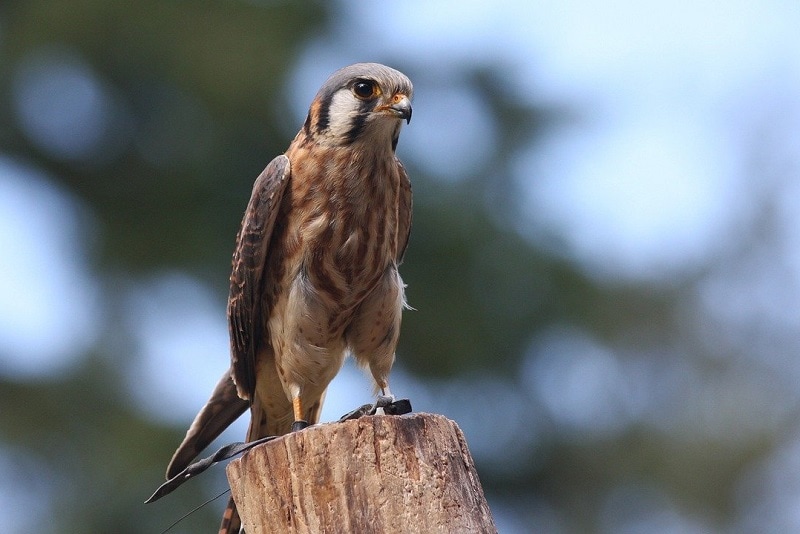
| Scientific Name | Corvus brachyrhynchos |
| Population | 31 million |
| Weight | 11.2 to 21.9 ounces |
| Wingspan | 33.5 to 39.4 inches |
| Time in Connecticut | Year-round |
The American crow lives year-round in just about all the continental United States. They’re also extremely intelligent and thrive in human-made environments.
You can often see these birds in cities and crowded suburbs, and they love to hang around local parks.

Final Thoughts
Now that you know more about the different types of black birds that you can find in Connecticut, all that’s left is for you to head out and start birdwatching!
There are plenty of options out there, and while you’re out looking for black birds, there’s a good chance that you’ll see birds of all different colors too.
Featured Image Credit: K-nana, Shutterstock
About the Author Robert Sparks
Robert’s obsession with all things optical started early in life, when his optician father would bring home prototypes for Robert to play with. Nowadays, Robert is dedicated to helping others find the right optics for their needs. His hobbies include astronomy, astrophysics, and model building. Originally from Newark, NJ, he resides in Santa Fe, New Mexico, where the nighttime skies are filled with glittering stars.
Related Articles:
Monocular vs Telescope: Differences Explained (With Pictures)
10 Types of Hummingbirds in Arkansas (With Pictures)
8 Types of Hummingbirds in Nebraska (With Pictures)
5 Types of Hummingbirds in Idaho (With Pictures)
3 Types of Hummingbirds in Mississippi (With Pictures)
8 Types of Hummingbirds in Kansas (With Pictures)
5 Types of Hummingbirds in West Virginia (With Pictures)
5 Types of Hummingbirds in Ohio (With Pictures)
